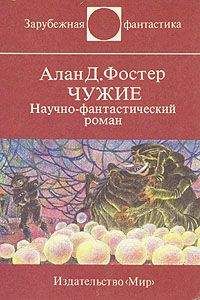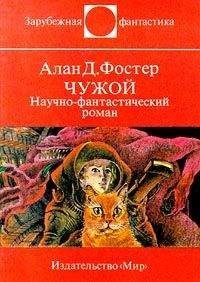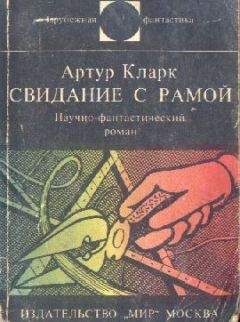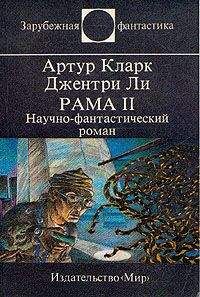Жемчужина Эйлера - Дэвид С. Ричесон
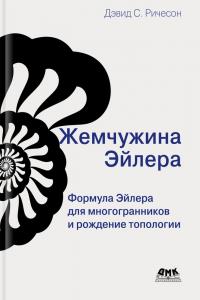
Помощь проекту
Жемчужина Эйлера читать книгу онлайн
--. (1987b). State models and the Jones polynomial. Topology 26 (3), 395407.
Kempe, A. B. (1879). On the geographical problem of four colors. American Journal of Mathematics II, 193–204.
Kepler, J. (1596). Mysterium cosmog^'aphicum. Tubingen.
--. (1938). Harmonice mundi. In M. Caspar (ed.), Johannes Kepler gesam-melte werke, vol. 6. Munich: Beck.
--. (1981). Mysterium cosmographicum: The secret of the universe. Translation by A. M. Duncan, introduction and commentary by E. J. Aiton, with a preface by I. Bernard Cohen. New York: Abaris Books.
--. (1997). The harmony of the world, vol. 209 of Memoirs of the American Philosophical Society. Translated from the Latin and with an introduction and notes by E. J. Aiton, A. M. Duncan, and J. V. Field, with a preface by Duncan and Field. Philadelphia: American Philosophical Society.
Klein, F. (1882). Uber Riemanns Theorie der algebraischen Functionen und ihrer Integrale. Leipzig: B. G. Teubner.
--. (1882/83). Neue Beitrage zur Riemannschen Funktionentheorie. Math. Ann. 21, 141–218.
Kleiner, B., and J. Lott (2006). Notes on Perelman's papers. www.math.lsa. umich.edu/~lott/ricciflow/perelman.html.
Kline, M. (1972). Mathematical thought from ancient to modern times. New York: Oxford University Press.
Knobloch, E. (1998). Mathematics at the Prussian Academy of Sciences 17001810. In H. G. W. Begehr, H. Koch, J. Kramer, N. Schnappacher, and E.-J. Thiele (eds.), Mathematics in Berlin, 1–8. Berlin: Birkhauser.
Koestler, A. (1963). The sleepwalkers: A history of man's changing vision of the universe. New York: The Universal Library.
Kuhn, T. S. (1970). The structure of scientific revolutions (2nd ed.). Chicago: University of Chicago Press.
Lakatos, I. (1976). Proofs and refutations: The logic of mathematical discovery. Cambridge: Cambridge University Press.
Lebesgue, H. (1924). Remarques sur les deux premieres demonstrations du theoreme d'Euler relatif aux polyedres. Bulletin de la Societe Mathematique de France 52, 315–336.
Lefschetz, S. (1970). The early development of algebraic topology. Bol. Soc. Brasil. Mat. 1 (1), 1-48.
Legendre, A. M. (1794). Elements de geometrie. Paris: Firmin Didot.
Lhuilier, S. (1811). Demonstration immedeate d'un theoreme fondamental d'Euler sur les polyedres. Memoires de l'Academie Imperiale des Sciences de Saint-Petersbourg 4, 271–301.
--. (1813). Memoire sur la polyedrometrie. Annales de Mathematiques 3, 169–189.
Listing, J. B. (1847). Vorstudien zur topologie. Gdttinger studien (Abtheilung 1) 1, 811–875.
--. (1861-62). Der Census raumlicher Complexe oder Verallgemeinerung des Euler'-schen Satzes von den Polyedern. Abhandlungen der kdniglichen Gesellschaft der Wissenschaften zu Gdttingen 10, 97-182.
Liu, A. C. F. (1979). Lattice points and Pick's theorem. Math. Mag. 52 (4), 232–235.
Livingston, C. (1993). Knot theory, vol. 24 of Carus Mathematical Monographs. Washington DC: Mathematical Association of America.
Lobastova, N., and M. Hirst (2006). World's top maths genius jobless and living with mother. Daily Telegraph. August 20.
Lohne, J. A. (1972). Harriot, Thomas. In C. C. Gillispie (ed.), Dictionary of scientific biography. Vol. 6, 124–129. New York: Charles Scribner's Sons.
--. (1979). Essays on Thomas Harriot. I. Billiard balls and laws of collision; II. Ballistic parabolas; III. A survey of Harriot's scientific writings. Arch. Hist. Exact Sci. 20 (3–4), 189–312.
Machamer, P. (1998). Galileo's machines, his mathematics, and his experiments. In P. Machamer (ed.), The Cambridge Companion to Galileo, Cambridge Companions to Philosophy, 53–79. New York: Cambridge University Press.
Mackenzie, D. (2006). Breakthrough of the year: The Poincare conjecture-proved. Science 314 (5807), December 22, 1848–1849.
MacTutor History of Mathemateics Archive, http://www-groups.dcs.st-and. ac.uk/~history. Created by J. J. O'Connor and E. F. Robertson.
Malkevitch, J. (1984). The first proof of Euler's formula. Mitt. Math. Sem. Giessen 165, 77–82.
--. (1988). Milestones in the history of polyhedra. In M. Senechal and G. Fleck (eds.), Shaping space: A polyhedral approach, proceedings of 1984 conference held in Northampton,MA, 80–92. Boston: Design Science Collection, Birkhauser Boston.
Martens, R. (2000). Kepler's philosophy and the new astronomy. Princeton, NJ: Princeton University Press.
Maurer, S. B. (1983). An interview with Albert W. Tucker. Two-Year College Mathematics Journal 14 (3), 210–224.
May, K. O. (1965). The origin of the four-color conjecture. Isis 56 (3), 346–348.
McClellan III, J. E. (1985). Science reorganized: Scientific societies in the eighteenth century. New York: A Columbia University Press.
McEwan, I. (1997). Enduring love. New York: Anchor Books.
--. (1963). Morse theory. Based on lecture notes by M. Spivak and R. Wells. Annals of Mathematics Studies, no. 51. Princeton, NJ: Princeton University Press.
--. (2003). Towards the Poincare conjecture and the classification of 3-manifolds. Notices Amer. Math. Soc. 50 (10), 1226–1233.
Mobius, A. F. (1863). Theorie der elementaren Verwandschaften. Abhandlun-gen Sachsische Gesellschaft der Wissenschaften 15, 18–57. Also in Gesammelte Werke, vol. 2, Leipzig, 1886, 433–471.
--. (1865). Ueber die Bestimmung des Inhaltes eines Ponders. Abhand-lungen Sachsische Gesellschaft der Wissenschaften 17, 31–68. Gesammelte Werke, vol. 2, Leipzig, 1886, 473–512.
Morgan, J. W., and G. Tian (2006). Ricci flow and the Poincare conjecture. http://arXiv: org/abs/math.DG/0607607.
Morse, M. (1929). Singular points of vector fields under general boundary conditions. Amer. J. Math. 41, 165–178.
Murasugi, K. (1958). On the genus of the alternating knot. I, II. J. Math. Soc. Japan 10, 94-105, 235–248.
--. (1987). Jones polynomials and classical conjectures in knot theory. Topology 26 (2), 187–194.
Nasar, S., and D. Gruber (2006). Manifold destiny: A legendary problem and the battle over who solved it. The New Yorker, August 28, 44–57.
Nash, C. (1999). Topology and physics-a historical essay. In I. M. James (ed.), History of topology, 359–415. Amsterdam: North-Holland.
Papakyriakopoulos, C. (1943). A new proof for the invariance of the homology groups of a complex. Bull. Soc. Math. Grece 22, 1-154.
Perelman, G. (2002). The entropy formula for the Ricci flow and its geometric applications. http://arxiv.org/abs/math.DG/0211159.
--. (2003a). Finite extinction time for the solutions to the Ricci flow on certain three-manifolds. ttp://arxiv.org/abs/math.DG/0307245.
--. (2003b). Ricci flow with surgery on three-manifolds. http://arxiv.org/ abs/math.DG/0303109.
Peterson, I. (2003). Recycling topology. Science News Online 163 (17), April 26.
Pick, G. (1899). Geometrisches zur zahlenlehre. Sitzungber. Lotos, Naturwissen Zeitschrift, Prague 19, 311–319.
Plato (1921). Theaetetus. Sophist. With an English translation by H. N. Fowler. New York: G. P. Putnam's Sons.
--. (1972). Philebus and Epinomis. Translation and introduction by A. E. Taylor. London: Dawsons of Pall

